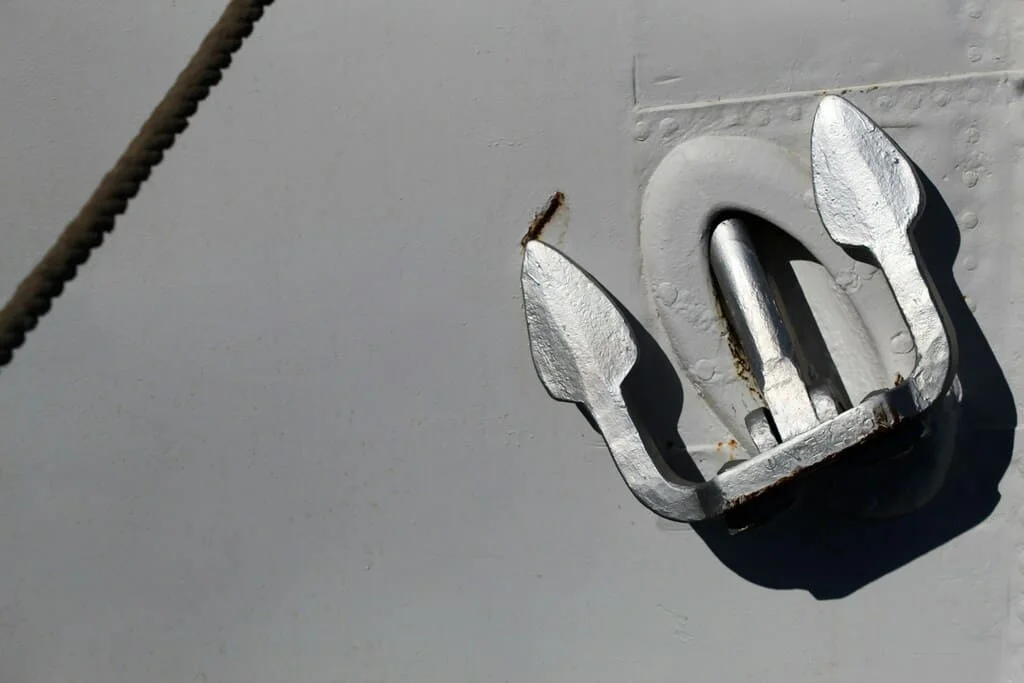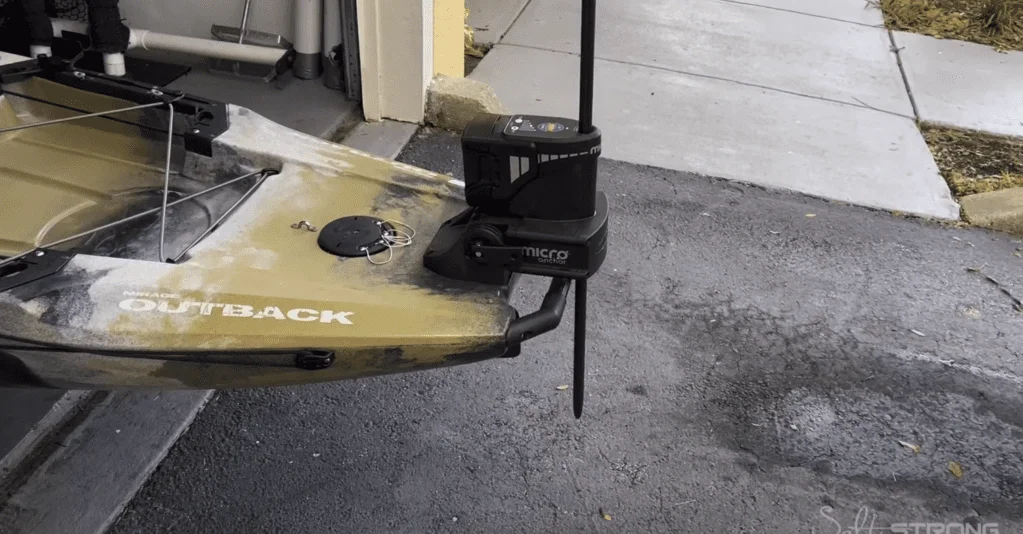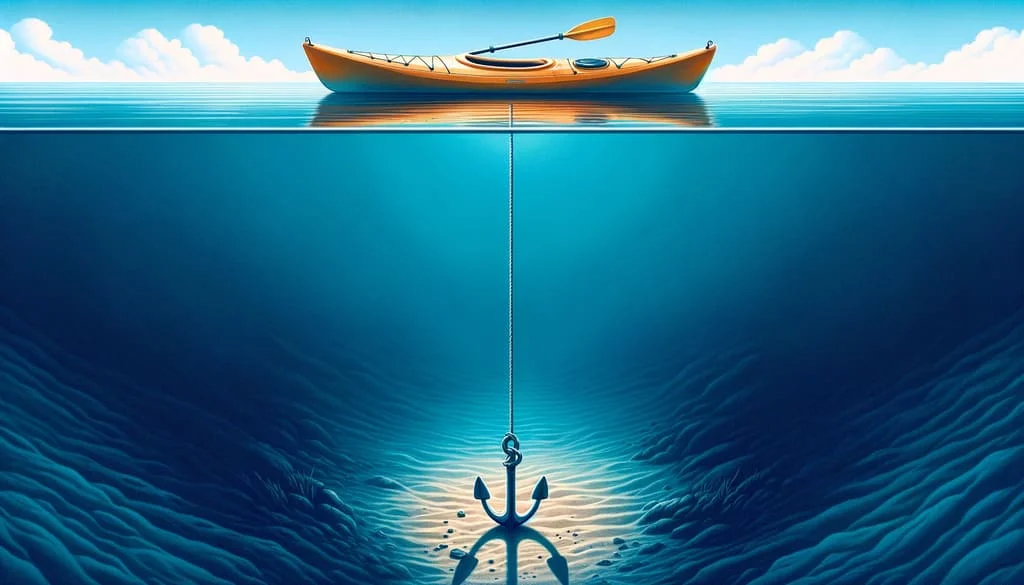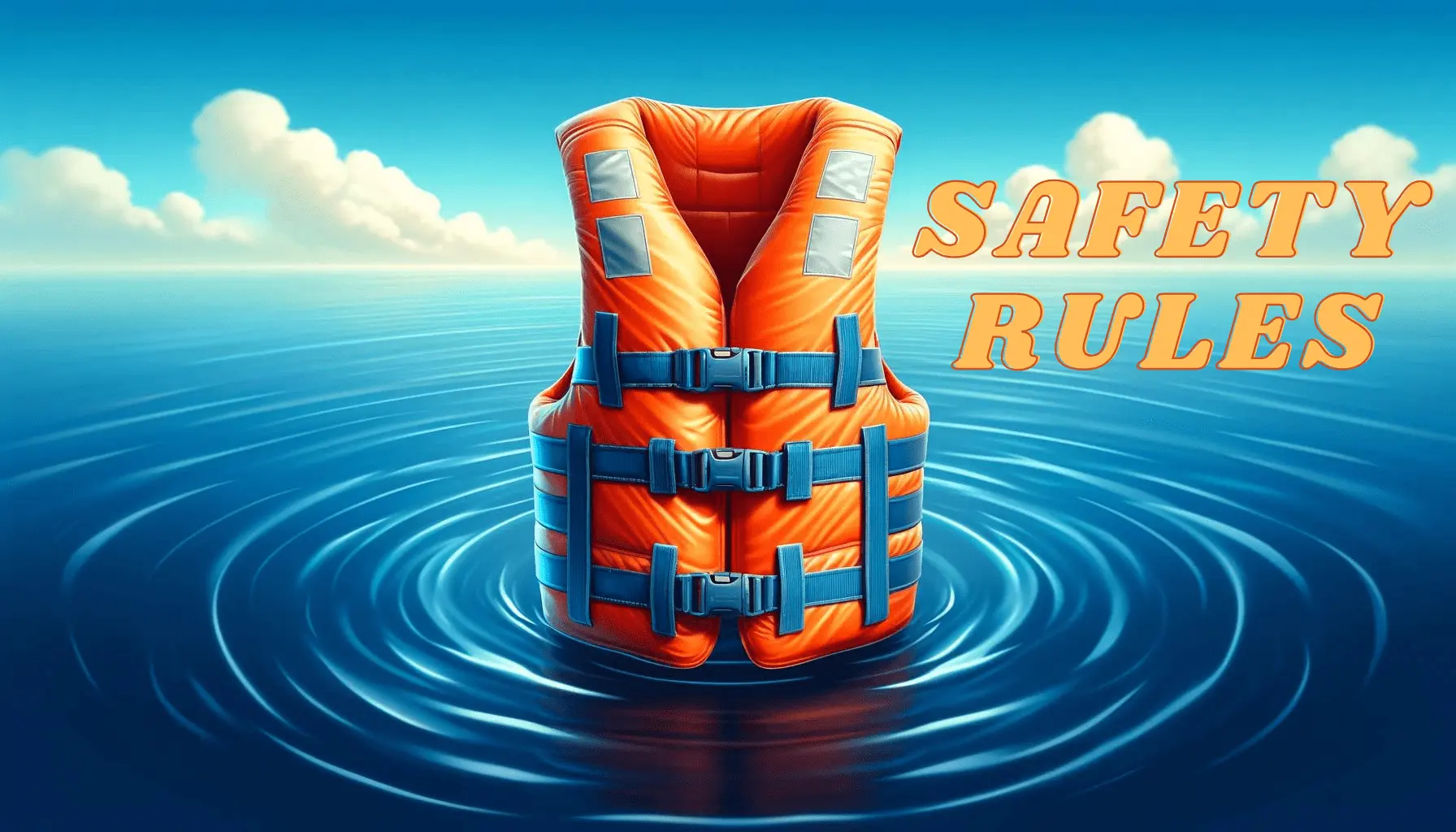Every kayaker knows the distinctive pull of the current or the unexpected gust of wind that can toss a serene day into disarray. But what if the key to tranquility on the water isn’t just in the paddling, but in how you anchor your vessel? Mastering how to anchor a kayak with secure anchoring techniques can make the difference between a day spent wrestling with the elements and one spent enjoying the stillness of nature. Whether you’re fishing, snapping photos, or just soaking up the sun, knowing the ins and outs of kayak anchoring tips is essential for kayak safety and enjoyment. With the right knowledge and gear, you can reclaim your piece of paradise on the water, unbothered by the capricious moods of Mother Nature.
Key Takeaways
- Understand the criticality of proper kayak anchoring for stability and safety on the water.
- Being equipped with the right anchoring accessories is crucial for dealing with elements like wind and current.
- Familiarize yourself with various anchoring techniques through practice in controlled environments.
- Learn the importance of selecting suitable kayak anchor gear for different water conditions, from lakes to rivers.
- Adopt secure anchoring techniques to enhance your kayaking experience while engaging in various activities.
Understanding Kayak Anchoring Basics
Mastering the art and science of kayak anchoring techniques is essential for any kayaker wishing to maintain a strategic position on the water. Not only does it enhance the overall experience, but it also heightens safety by preventing unwanted drifting in various water conditions. This section dives into the importance of anchoring correctly and the different scenarios where specific kayak anchor systems prove to be advantageous.
Importance of Proper Anchoring Techniques
Employing the best way to anchor a kayak is about more than just staying put – it’s about stability and safety. Whether facing the gentle push of a lake or the insistent pull of a river current, the right technique can mean the difference between a pleasant stop and an unplanned swim. Understanding how to anchor from the bow or stern, and how each direction influences kayak stability, is crucial in varying aquatic environments.
Different Anchoring Scenarios
Adaptation is key in kayak anchoring techniques, as water bodies are not created equal. The tranquil confines of a still lake demand a different approach compared to the dynamic flow of a fast-moving river. Let’s explore the types of anchors suitable for these divergent scenarios:
- Grapnel anchors, the all-rounders, are ideal for a range of bottoms from rocky beds to weedy areas.
- Stakeout poles shine in the shallow waters, offering quick and non-intrusive anchoring.
- For those dealing with current, a drag chain provides controlled drift and easy retrieval.
Recognizing when and where to use these anchoring aids can significantly enhance a kayaker’s command over their position and ultimately, their enjoyment of the day’s pursuits.

Choosing the Right Kayak Anchor
Embarking on a kayaking adventure, whether it’s angling in serene waters or exploring scenic estuaries, demands the mastery of essential skills like kayak anchoring techniques. With various anchoring tools at one’s disposal, understanding the kayak anchor setup suitable for your specific needs is of paramount importance.
Grapnel vs. Stakeout Poles: Pros and Cons
For those weighing the options between a grapnel anchor and a kayak anchor pole, the decision hinges on a balance of function, storage, and deployment speed. Grapnel anchors, recognized for their versatility, can effortlessly grip different types of bottoms with their foldable arms. Their compact design makes storage a breeze. Stakeout poles, on the other hand, shine in shallow waters where they can be swiftly plunged into the sediment providing instantaneous stabilization.
- Pros of Grapnel Anchors:
- Exceptional hold in diverse bottom types
- Compact and easy to store
- Great for deeper waters
- Pros of Stakeout Poles:
- Ideal for kayak anglers in shallow water
- Quick deployment and retrieval
- Less prone to snags in vegetation-rich beds
The choice between these two fundamentally depends on factors like the kayak’s weight, water depth, and the type of aquatic terrain. Grapnel anchors offer a trustworthy solution for more profound, unpredictable conditions. Yet, for a shallow, sand or mud bottom, stakeout poles could be the perfect, effortless solution.
Powered Anchoring Systems for Quick Deployment
For kayakers who prioritize speed and ease, powered anchoring systems are revolutionizing the realm of kayak anchor setups. Anglers have especially found them invaluable when the swift implementation of an anchor could mean the difference between snagging a prize catch and watching it swim away. These remarkable systems allow for anchoring at the mere push of a button and are particularly useful on lazy rivers or for those who engage in sight fishing.
- Instantaneous anchoring reduces setup time.
- Hands-free operation allows for uninterrupted fishing or paddling.
- Enhanced accuracy and positioning with the touch of a button.
No longer is the kayak anchoring process a cumbersome, time-consuming affair. These systems bring forth a level of convenience and efficiency that is undoubtedly a game-changer in the world of kayak angling and exploration.

How to Anchor a Kayak in Shallow Waters
Mastering the art of anchoring a kayak in shallow waters can significantly enhance your kayaking experience, especially when participating in activities that require staying in one spot. One of the kayak anchoring tips to ensure stability and security is utilizing a kayak anchor pole, which is considered the best way to anchor kayak in such conditions.
Utilizing Anchor Poles for Stability
Anchor poles are particularly useful in environments where traditional anchoring methods may not be as effective. For kayak enthusiasts venturing into shallow waters, the convenience of an anchor pole can be unparalleled, providing a swift and reliable hold without much hassle.
The simplicity of the anchor pole system lies in its straightforward design and ease of use. Here are some practical ways to employ anchor poles for securing your kayak:
- Direct Insertion: Slide the anchor pole through your kayak’s scupper holes directly into a soft bottom, ensuring the pole stands firm and upright.
- Lateral Positioning: If scupper holes aren’t an option, position the pole alongside your kayak and tether it securely with a rope, which will keep you anchored in your desired position.
Either method ensures minimal movement, making it an essential tactic for those looking to remain stationary for pursuits such as fishing, where stability is a must. By using this technique, you can confidently maintain your position even when the water’s tranquility is interrupted by the occasional nudge of a current or breeze.
Remember, in shallow aquatic terrains, the kayak anchor pole is not only effective but also an eco-friendly option, as it minimizes disruption to the waterbed and surrounding wildlife—an important consideration for the environmentally conscious kayaker.
When searching for the right gear, consider the construction and height of the pole for suitability for your specific kayaking activities. The best kayak anchoring tips always include choosing the appropriate equipment for the environment and conditions you’ll face, and in shallow waters, an anchor pole is a proven winner.
Anchoring a Kayak in Currents and Rivers
Kayak anchoring in fast-moving waters such as currents and rivers requires special attention to detail and the use of robust kayak anchor systems. The dynamics of flowing water mean that standard anchoring techniques may not suffice, leading one to explore more specific kayak anchoring techniques and equipment.
Drag Chains as an Effective Solution
When dealing with the challenge of anchoring a kayak in currents, drag chains present themselves as a practical solution. Their weight and design allow them to conform to the uneven surfaces often found at the riverbed, making them less likely to snag while still providing a secure anchor point.
- Drag chains can be adjusted for length and weight, optimizing them for the specific conditions of the river.
- A buffered chain helps protect the kayak from sudden jolts and strong currents.
- When not in use, they can be efficiently stored onboard the kayak, taking minimal space.
Strategies for Swift Water Conditions
In swift water conditions, strategy is key. Implementing kayak anchor trolley installation can significantly improve your ability to manage anchoring positions and quickly adapt to changing conditions.
- Anchoring trolleys give the ability to adjust the anchoring point from the bow to the stern swiftly, reducing the risk of capsizing.
- Quick-release setups are vital in emergency scenarios, allowing the kayaker to disengage from the anchor system instantly.
- Rigging the kayak for quick deployment and retrieval will enhance not only the kayaker’s safety but also their enjoyment of the experience.
It’s crucial for avid kayakers to master these techniques and systems to ensure that their time spent on the water is both enjoyable and secure. Embracing the correct kayak anchoring techniques, coupled with the right kayak anchor systems, can transform the experience of kayaking in currents and rivers from daunting to exhilarating.
Kayak Anchor Setup: The Essentials
Mastering your kayak anchor setup is crucial for a stable and secure kayaking experience. Understanding the components and implementation of effective kayak anchoring techniques is just as important as the anchor itself. Let’s delve into the essential aspects of creating a reliable anchor system that can keep you firmly in place, regardless of the aquatic environment.
The Role of the Kayak Anchor Trolley
One fundamental aspect of a solid kayak anchor setup is the kayak anchor trolley installation. This system offers unparalleled control over the location of your anchor point, allowing you to modify the position of your kayak in response to changing wind and water currents without leaving your seat. The flexibility of adjusting from bow to stern ensures your kayak remains balanced and directed into the waves for optimal stability.
Optimal Anchor Rope and Chain Lengths
Selecting the appropriate lengths for anchor rope and chain can make a significant difference in your anchoring security. As a general guideline, it’s recommended to use an anchor line that is twice the maximum expected depth of the water. Incorporating a small segment of chain between your rope and anchor aids in keeping the anchor line taut and enhances the anchor’s ability to set properly on the bottom.
Securing Your Anchor Line for Safety
Ensuring your anchor line is securely fastened while allowing for quick release constitutes an important safety precaution. Devices such as cleats and quick-release clips can offer the strength needed to withstand the pull of currents, while also facilitating rapid detachment in the event of an emergency. By combining these elements, you create a kayak anchor setup that’s both robust and responsive to your on-the-water needs.
- Adequate planning of kayak anchoring points
- Selection of the correct anchor rope and chain based on water conditions
- The strategic use of cleats and quick-release mechanisms for safety
Incorporating these fundamental aspects into your kayaking practice will not only improve the effectiveness of your anchoring efforts but also enhance your overall experience, allowing you to focus on the adventure at hand without unexpected drifts. Remember, thorough preparation and understanding of your kayak anchoring equipment and techniques are vital for a successful and enjoyable day on the water.

How to Anchor a Kayak in Deep and Open Waters
Adventuring into the vastness of the ocean presents a set of challenges distinct from anchoring a kayak in shallower, inland waters. The depths and dynamics of open waters demand a kayaker’s keen attention to detail and a thorough understanding of the marine environment. Utilizing the right kayak anchor gear and assimilating valuable kayak anchoring tips are fundamental to ensuring a safe and enjoyable experience on the open sea.
Assessing Ocean Conditions for Secure Anchoring
Before deploying any anchor, one must assess the current marine conditions, including the weather, tide, and ocean floor composition. These factors determine not only the type of anchor to use but also the techniques for deploying and retrieving it. Sound judgment and experience in reading ocean conditions are critical in executing how to anchor a kayak seamlessly in these expansive waters.
Specialty Anchors for Ocean Kayak Fishing
For those engaged in ocean kayak fishing, the choice of anchor can make a significant difference. Wreck anchors, known for their robust construction and ability to grip to subaquatic structures, offer reliability when fishing near reefs or wrecks. Their design often includes wire spines that easily penetrate tough bottoms yet facilitate an uncomplicated retrieval process. Advanced kayak anchor gear, complemented by strategic anchoring practices, ensures anglers can focus on the catch while being safely moored in the deep blue.
FAQ
What are the key considerations for anchoring a kayak safely?
Key considerations include knowing the correct methods to avoid capsizing, performing anchoring based on weather and current conditions, and selecting the appropriate anchor for the environment. Using an anchor trolley system and securing your line are also crucial for a safe kayak anchoring experience.
Why is it important to understand different anchoring scenarios?
Understanding different anchoring scenarios is essential because various water environments like calm lakes, swift rivers, and open oceans require different approaches and anchoring systems to ensure the kayak remains stable and secure without adding risks.
What are the advantages and disadvantages of grapnel anchors versus stakeout poles?
Grapnel anchors are versatile and ideal for various bottom types but can be cumbersome in shallow water. Stakeout poles are lightweight and quick to deploy in shallow waters, providing excellent stability but are not suitable for deep waters.
How do powered anchoring systems benefit kayak anchoring?
Powered anchoring systems offer convenience and quick deployment with the push of a button, which is particularly useful for anglers who may need to anchor quickly to maximize fishing opportunities or when navigating leisurely rivers.
What is the best way to anchor a kayak in shallow waters?
In shallow waters, using an anchor pole that can be inserted directly into the bottom or tethered alongside the kayak is the most effective method. It offers quick deployment and a stable anchor point, essential for activities that require the kayak to remain stationary.
How do drag chains work as an anchoring solution in current and river scenarios?
Drag chains anchor a kayak by providing a controllable point of resistance that adapts to the riverbed while mitigating the risk of getting stuck. They are ideally sized and buffered to ensure they conform to uneven surfaces and maintain the kayak’s position in current.
What are some strategies for kayak anchoring in swift water conditions?
Strategies include using an anchor trolley system for precise placement, employing quick-deploy techniques, ensuring that the rigging is secure, and having the ability to quickly retrieve the anchor to avoid being caught in dangerous conditions.
How does a kayak anchor trolley system improve anchor setup?
An anchor trolley system allows the kayak angler to adjust and redirect the anchoring point from the bow to stern without leaving their seat. This adjustability enhances stability and control over the kayak’s positioning.
What are the optimal anchor rope and chain lengths for effective anchoring?
Generally, the rope length should be twice the depth of the water you’re anchoring in. A small segment of chain attached to the anchor improves the overall hold on the bottom by adding weight and reducing the angle of pull on the anchor.
How do I secure my anchor line to ensure safety while kayaking?
Securing your anchor line involves using a cleat or a quick-release method to facilitate both a firm hold and the ability to quickly disengage in case of emergencies or the need to reposition.
What are the factors to consider when anchoring a kayak in deep and open waters?
When anchoring in deep and open waters, it’s important to assess marine conditions carefully, understand the currents, and choose an anchor designed for holding in such environments, like a wreck anchor, to ensure safety and reliability.
What are specialty anchors and how are they used for ocean kayak fishing?
Specialty anchors, such as wreck anchors or anchors with lead spines, are designed to provide a firm hold on ocean floors with varying types like sand, rock, or coral. They are crucial for ocean kayak fishing where conditions require a more robust anchoring setup.



